Radiation Budgets
A budget deals with the rates of a process coming into and out of the system. For example, a financial budget deals with the rates of money being spent and saved. Save more than you spend, and you accrue money. Spend more than you save, and your bank balance decreases. We study the rates of radiation being absorbed (rates in) compared to the rates being emitted (rates out) to determine if an object is gaining or losing energy.
A good starting place is to examine the data from the black fabric experiment from the Interaction of Radiation with Matter. In the black fabric experiment, an intense light illuminates three fabric samples for three to five minutes. In visible light, all three materials are black. Yet, in the near-infrared, they have different reflectivity. Fabric B is quite reflective (light gray), Fabric C is moderately reflective (dark gray), and Fabric A highly absorbent (black). How did the surface temperatures of the fabrics change with time?
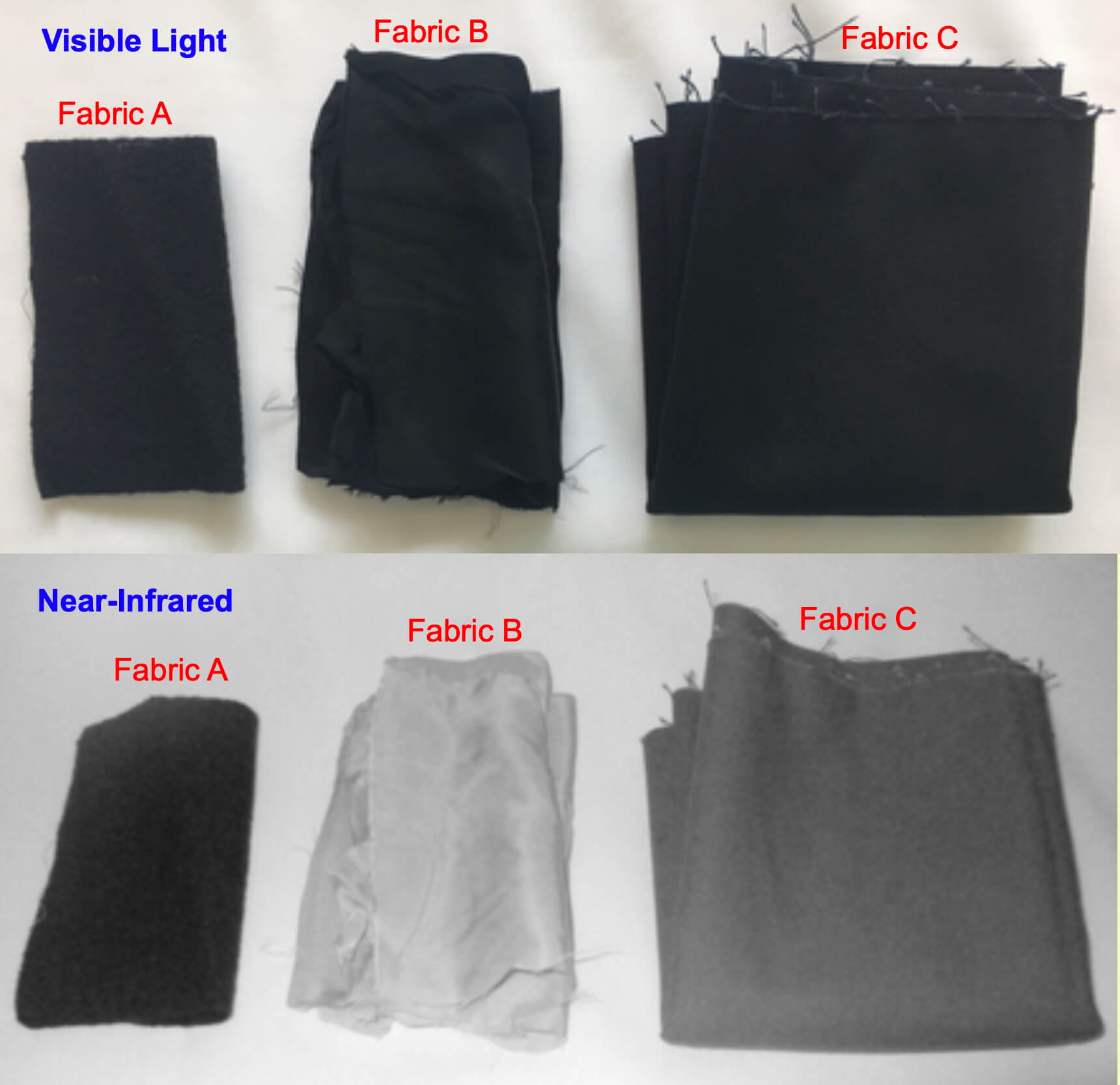
Three different swatches of black fabric are photographed in visible light and near-infrared. The darker the shade, the more absorbent the fabric to those wavelengths of radiation. The key to the black fabric experiment is to use an incandescent light bulb (one that is very hot to the touch!) since the intense light contains roughly 15% visible light and 70% near-infrared, and the rest in mid to far-infrared.
Rates of Radiation Absorbed, Reflected and Emitted
The three fabrics are the same distance from the intense light source, so the amount of incoming radiation for each cloth sample is identical. The varying rates of radiation absorbed by each fabric depend on their reflectivity. Since the fabrics are black, most of the visible light is absorbed by each sample, so we need to consider what is happening to the light we cannot see – the near-infrared, and Fabric A absorbs the most and Fabric B the least.
Since the lightbulb is emitting roughly 12% visible light compared to greater than 70% near-infrared, the variation in reflectivity of near-infrared creates quite a difference in the amount of radiation absorbed by each fabric.
In these experiments, the amount of visible and near-infrared transmitted through the swatches of black cloth was negligible, which simplifies our calculations.
Rate Incoming Radiation = Rate Reflected + Rate Transmitted + Rate Absorbed
Rate Incoming Radiation = Rate Reflected + Rate Absorbed
Rate Absorbed = Rate Incoming Radiation – Rate Reflected
See the Interaction of Radiation with Matter for more details about absorption, reflection, and transmission.
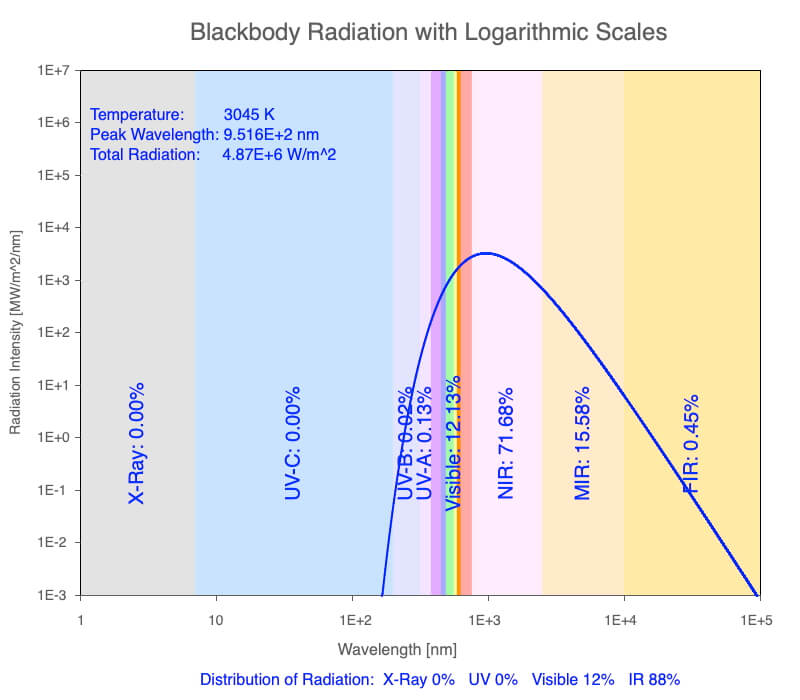
An incandescent lightbulb is quite hot (over 5000ºF or 2775ºC, yet less than 15% of the emitted radiation is visible light! The vast majority is near-infrared radiation (>70%).
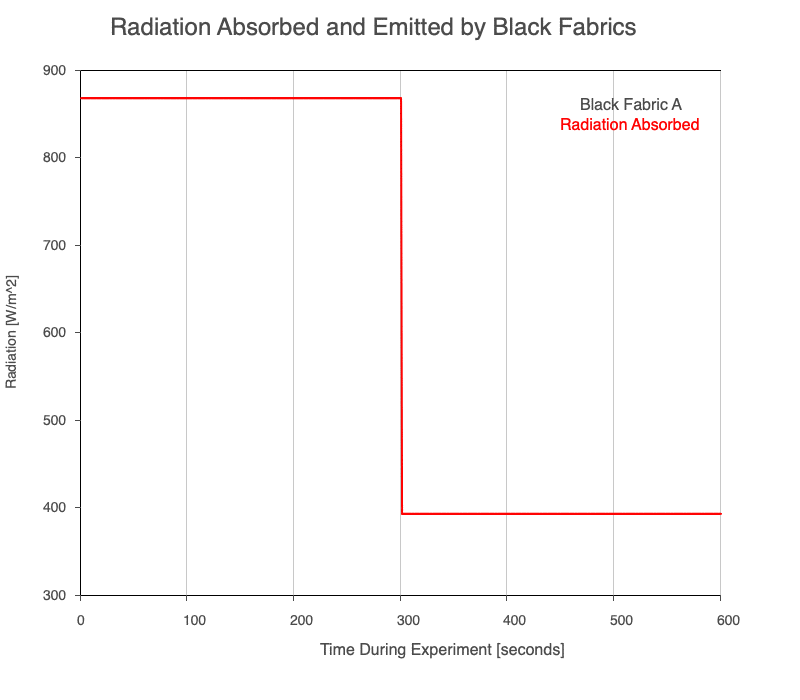
Fabric A absorbs the most radiation with time since it absorbs nearly all of visible light and near-infrared (NIR). Fabric C has a moderate rate of absorbed radiation since it is somewhat reflective of NIR, and Fabric B has the lowest rate of absorption since it is quite reflective in the NIR.
The data are also available in the Blackbody Radiation software.
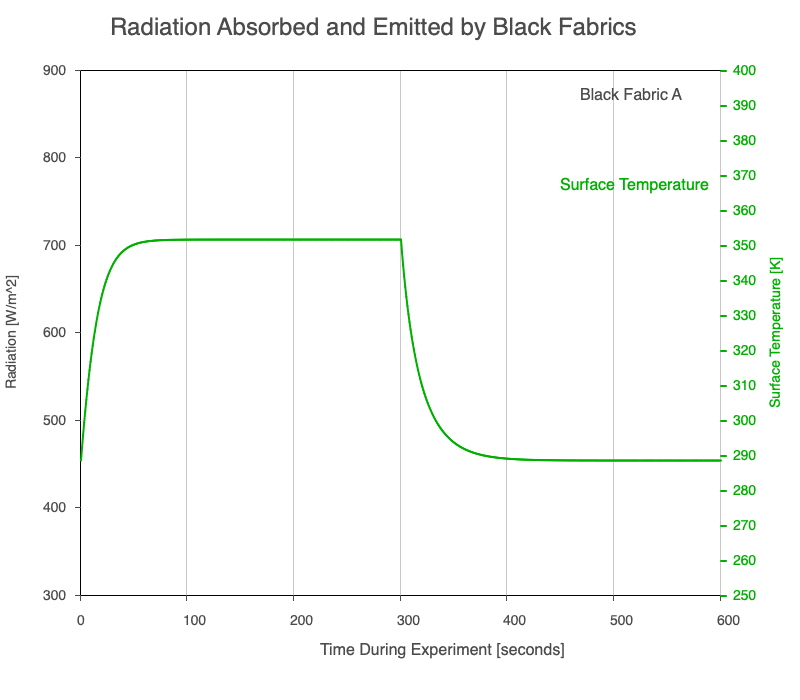
The absorbed radiation transforms into thermal energy within the fabric, so A warms most quickly, C at a moderate rate, and B at the slowest rate.
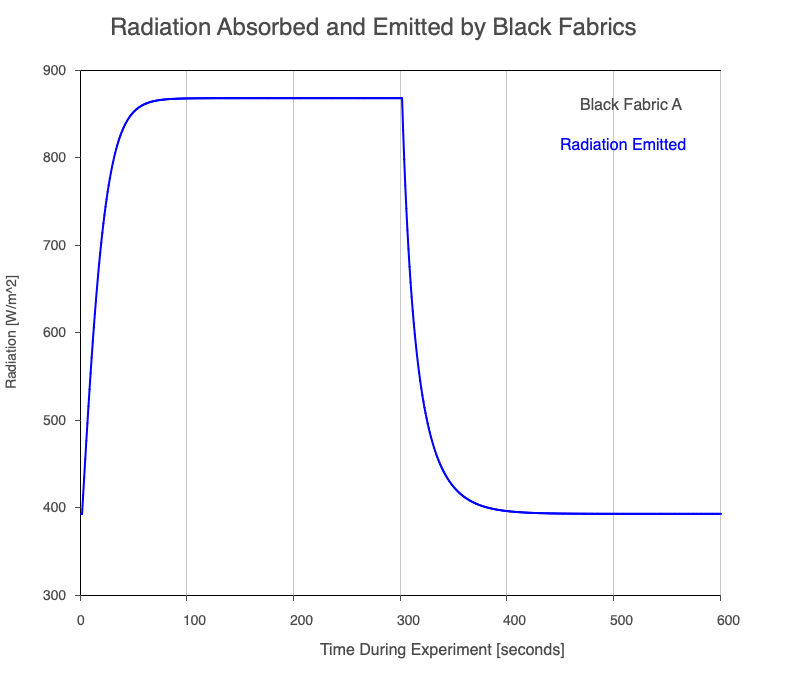
The rate of thermal radiation emitted is proportional to the object’s temperature in degrees Kelvin to the fourth power, and emitted radiation cools the fabric. So Fabric A’s emitted radiation quickly increases, C’s rate of emission is moderate, and B’s is the least. All three materials reach a steady temperature when the rate of incoming radiation equals the rate of outgoing radiation.
When the light is turned off after 5 minutes, since A is emitting the most radiation, it cools quickest.
This concept map highlights two of the three factors that affect the fabric’s temperature:
-
- the rate of absorbed radiation which warms the material, so how much radiation coming from the lightbulb is critical,
- the amount of radiation reflected by the cloth which decreases the rate of absorbed radiation, and
- the rate of radiation emitted by the heated fabric, which limits the heating when the light is on and cools the material when the lightbulb is off.
The interconnected processes of absorbed radiation heating the fabric and the emitted radiation cooling the material create negative feedback that limits how warm the cloth becomes.
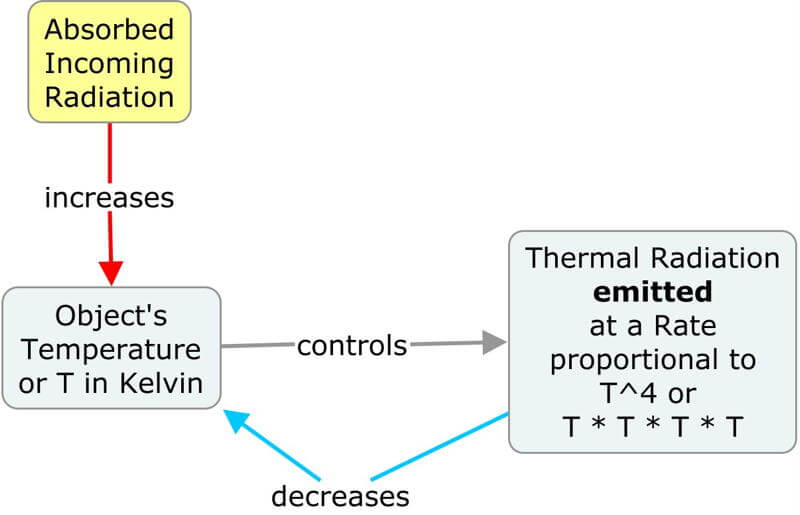
Energy Surplus versus Deficit
In this scenario, the lightbulb is turned on, instantly illuminating the samples of black fabric in a constant intensity of visible and near-infrared light. Each of the swatches emits less thermal radiation compared to that absorbed. There is an energy surplus: more is coming in than that leaving. The excess energy is converted to thermal energy, which, in turn, increases the amount of thermal radiation emitted from the black fabric. When the rates of absorption and emission are equal, the material is in radiative equilibrium, and the temperature remains constant. Note that this is a first-order approximation since other heat transfer processes are affecting the fabric’s temperature.
Turning off the lightbulb creates an energy deficit: there is more radiation emitted than absorbed, so the fabric quickly cools. Since the materials cool back to room temperature, there must be additional factors in play that help control the temperature of the cloth, such as conduction of heat with the tabletop below and the air above. In the simulation, conduction was not directly calculated; however, its effect was estimated by assuming the was at a constant temperature and emitted thermal radiation back to the fabric.
The black fabric experiment is an example of a simple radiation budget in which incoming radiation is instantly on or off. When on, it shines at a constant intensity onto the material. Since Earth is a rotating sphere, the intensity of sunlight illuminating the ground changes throughout the day, explore how this affects the Earth’s surface radiation budget in Diurnal Heating.
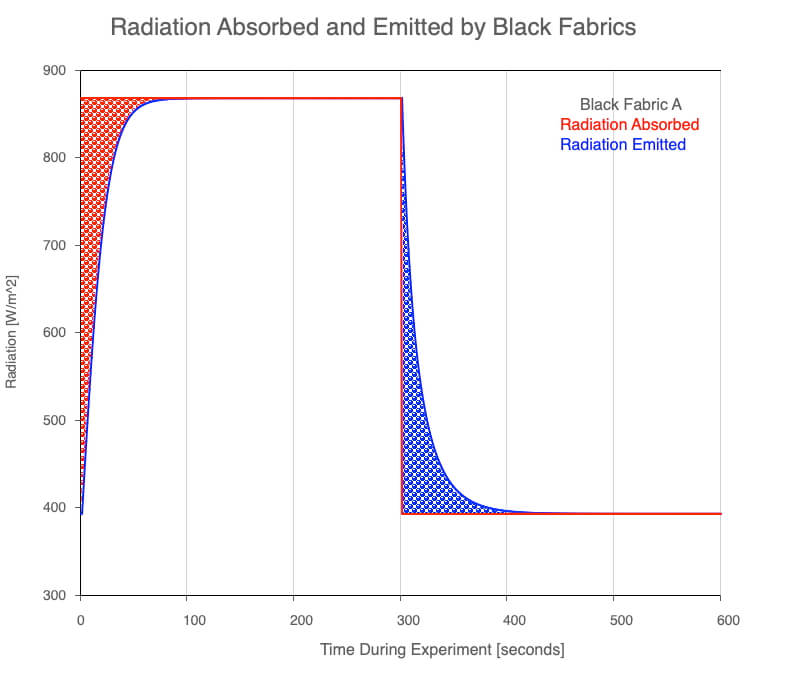
Comparing the rates of radiation absorbed and emitted show periods of energy surplus (shaded in red) and energy deficit (shaded in blue). The magnitude of each for a given time is the vertical height of the shaded region. The larger the surplus or deficit, the greater the rate of temperature change.
Blackbody Radiation Desktop Software
Use the Blackbody Radiation software to explore the spectrum of radiation emitted from objects with a range of temperatures. Relate the amounts and types of radiation emitted to Earth system processes, including how the Sun has changed and will change over billions of years. To help, here is a document of key terms.
Big Ideas
- A radiation budget depends on the rates of radiation being absorbed (rates in) compared to the rates being emitted (rates out).
- When there is an energy surplus, more radiation is absorbed than emitted, so the object warms, causing it to emit exponentially more radiation.
- When there is an energy deficit, more radiation is emitted than absorbed, so the object cools, and the rate of emitted radiation exponentially decreases.

0 Comments